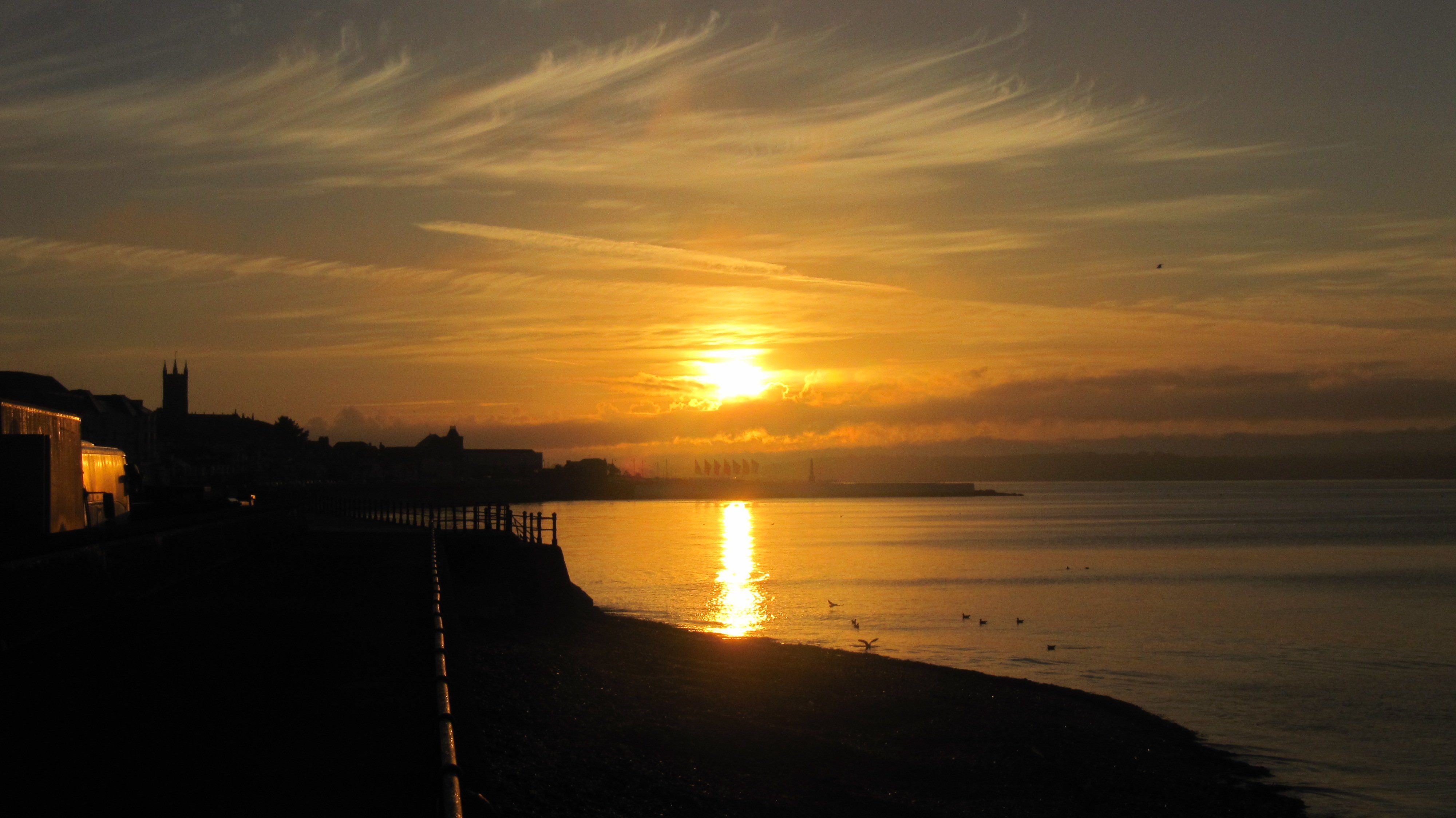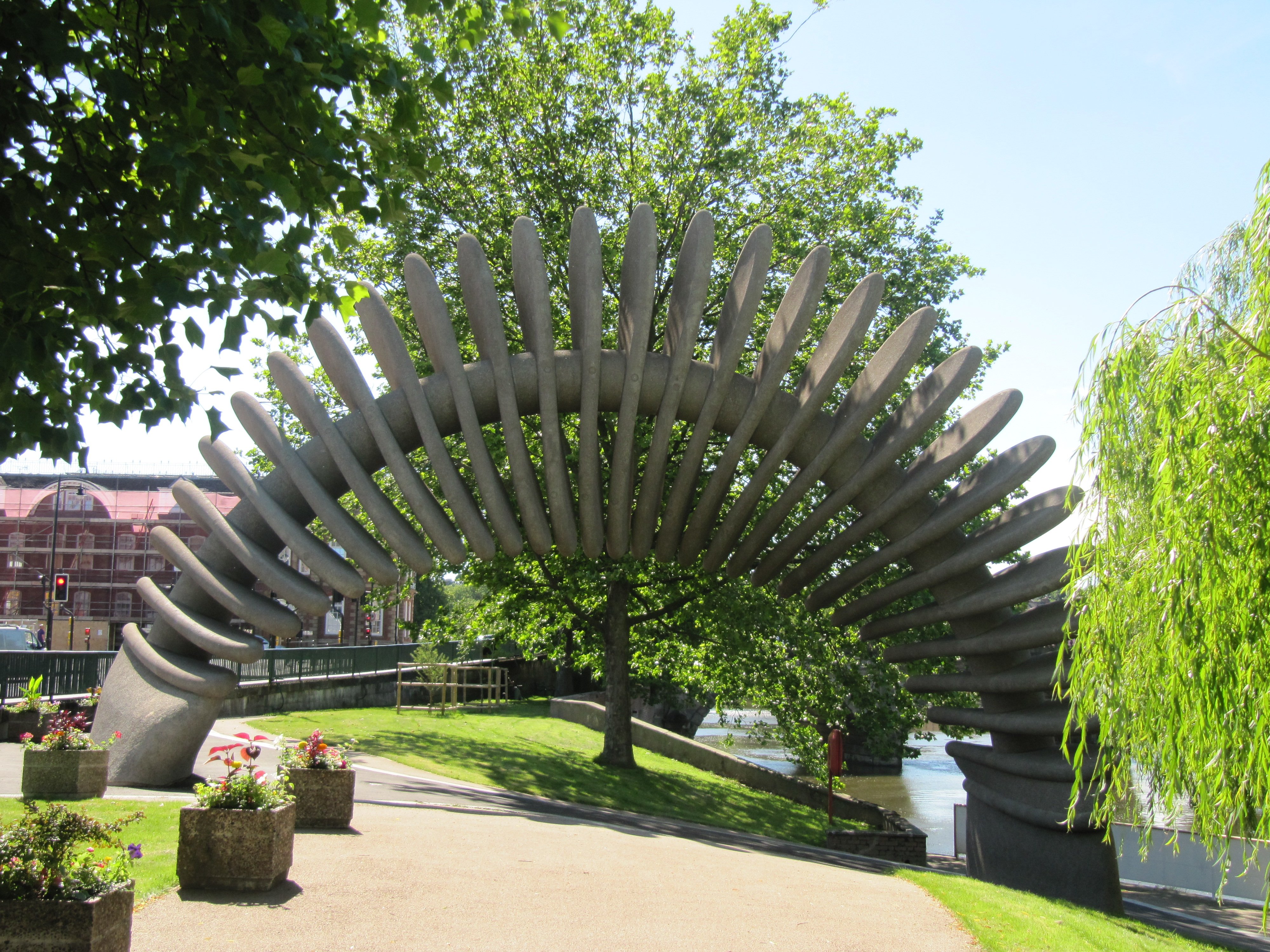Meaning and Disjuncture in Art
by David Hamilton (November 2010)
A significant difference between contemporary art and traditional art is the split between form and meaning. This is a manifestation of the all pervasive Cartesian duality: the split between mind and body, subject and form. This split is in all the various forms and styles of the respective High Art forms. Contemporary artists try to destroy the forms. This practice in architecture makes contemporary buildings look silly. The buildings all look like objects they are not and usually something comic which is why they get nicknames like The Gerkhin or The Cheesegrater.

To say something like Damian Hirst’s pickled shark is important is pretentious. It is supposed to make us think, to arrest us but by taking the shark out of context (the sea) it is rendered meaningless because it is deprived of its being which is its life, and its functions. Context however, does not confer the status of art on objects: Duchamps urinal is still a urinal wherever it is put. It might have pleasing curves but can only be admired for its design and not as an artistic object because it prompts no depth of feeling. Duchamp called it Fountain and straight away there are splits between the function of the object and its setting.
Neither context nor reasons make a work art. Art is defined by its intrinsic qualities and the artifice used. That last is: development from nature through human imagination and technical ability. The technical ability must be with the imagination or it is only skill. The artists organises the components to suggest meaning: the placing of the figures and their gestures say; this occurs in some photography like fashion photography but the disqualification of the latter as art is its shallowness: there is no deep or moving emotion conveyed.
Trying to shock people is petty and there are more important feelings and emotions to prompt. That is where the pretentiousness lies. The stated aim is to shock but that is a means to their end of making themselves rich because the elites reward these attacks on our culture. Its like having a brief to undermine our artistic traditions. They have minor imaginations which prompt only single responses whereas a work by a major artist like Dali prompts a sequence of emotional responses.
Avant-garde art begun around 1850 with the Realism of Gustave Courbet, who was influenced by early socialist ideas. This was followed by the successive anti-tradition movements of modern art and was synonymous with modern, but is now rather quaint.
There is a phenomenon in English art: a seven year-old boy Kieron Williamson. (1) He has an indefinable knack that is called genius. This is artistic judgement in the practice of painting when one just knows instinctively what to put or where. He has several natural qualities: perspective and “choice of colours.” He has them automatically but perspective is a technique for realising the vision and choice of colours is part of the expression of the vision.
This knack is the artistic eye, artistic judgement and it is a non rational process – it is intuition or instinct and it is this that technique realises. In Kieron’s case it was triggered by the Devon and Cornwall landscape and “sprung full-born into life” like Athena from Zeus’s head. It recalls Plato’s idea of all knowledge being born with the human mind: this was instantly realised, not slowly educed.
Splodgeness Abounds
Commercial galleries need to appeal to a buying public and be more popular than avante gard painters yet they follow the fad of impressionistic landscapes that lose their meaning by a overusing technique over imaginative vision: the scene is obscured by splodges of paint! This obtrudes between the scene depicted and the viewer and causes a disjuncture in the meaning. This is technique over intuition or skill over the knack. By contrast the camera can elevate the knack over technique as one makes an artistic judgement on what to photograph. It gives a clear reproduction of the scene not splodgy brush strokes that could be anything from a cloud or wave or a sunbeam to just a slip of the brush. These smears festoon every commercial gallery in the country. The people who work in these commercial galleries keep drawing one’s attention to them. This effect is demonstrated by comparing these with photographs.
 I recently took several photos of a sunrise in Penzance bay in the English county of Cornwall and sunset at Brighton. There is little technique involved and as long as you point the camera at the right thing you are away. The camera is recording natural phenomena but a meaning is conveyed from photographer to viewer. In the above examples it is natural beauty. When you look at a photograph of a landscape a chain of thought is triggered which moves from the inherent emotional state conveyed to personal and often unconscious thoughts and feelings.
I recently took several photos of a sunrise in Penzance bay in the English county of Cornwall and sunset at Brighton. There is little technique involved and as long as you point the camera at the right thing you are away. The camera is recording natural phenomena but a meaning is conveyed from photographer to viewer. In the above examples it is natural beauty. When you look at a photograph of a landscape a chain of thought is triggered which moves from the inherent emotional state conveyed to personal and often unconscious thoughts and feelings.
A great paradox – modern music
Music was suffering the same culture war as painting but was saved from an unexpected quarter. What we know as the culture wars, political correctness etc, could not have made such progress if it had not been adopted by the great burgeoning of talent in popular music of the 1960s. For example, the words to The Beatles hit Get Back were developed from a spoof of British politician Enoch Powell’s Rivers of Blood speech that Paul McCartney later turned into a more conventional rock song.
Conversely, McCartney and John Lennon wrote deeply moving melodies and through harmony revived tonal music after modernists began destroying the traditional classical music with atonal, as composers Schoenburg and Stockhausen did and produced water gurgling down a drain noises. The Beatles natural musical genius was realised through the technique of their producer George Martin and they used harmony to create different moods. British composer Peter Maxwell Davies compares McCartney with Schubert as one of the great songwriters.
arrangements and instrumentation were written or performed by Martin in collaboration with them. For example it was Martin’s idea to put a string quartet on “ to show what type of “voicings” could be used. To realise “Psycho.
A Day In the Life.
“ “ used the tune of “Irish Rover” to carry the message. He did more to revive British folk tradition and diction than anyone in Britain.
Public Art
Statues are stylised and used to convey various human qualities. Military heroes say, were shown in proud and honourable poses that suggested authority, fortitude, steadfastness. Lord Hill’s column in Shrewsbury is a case. He had been number two to the Duke of Wellington and his statue shows strength and authority. As do Nelson’s more famous column in Trafalgar Square and other authoritative figures along Whitehall. They were cast in forms that conveyed meaning but contemporary public art fails in that elementary intention and the meaning is disjunctured.
 Shrewsbury has honoured its world famous local Charles Darwin by “public art” but does it succeed in its purpose? One known as Quantum Leap is dissociated meaning as the form is not directly linked to the subject so there is no representation. The title Quantum Leap actually refers to something in physics not evolutionary biology which was Darwin’s study. It is probably the contemporary informal term for making a major leap forward but applied to something celebrating Darwin confuses rather than elucidates. These contemporary artefacts arouse no curiosity and one does not feel inclined to enquire about them. They cannot be taken seriously as there is no spirit of genius behind them; rather, a commercial motive which are part of contemporary popular fashion and do not gain gravity from tradition. Quantum Leap looks like an armadillo crossed with a pack of cards and seems to be influenced by popular film Jurrasic Park rather than show the idiosyncracy and non-conformity of genius nor does it exemplify something from Darwin
Shrewsbury has honoured its world famous local Charles Darwin by “public art” but does it succeed in its purpose? One known as Quantum Leap is dissociated meaning as the form is not directly linked to the subject so there is no representation. The title Quantum Leap actually refers to something in physics not evolutionary biology which was Darwin’s study. It is probably the contemporary informal term for making a major leap forward but applied to something celebrating Darwin confuses rather than elucidates. These contemporary artefacts arouse no curiosity and one does not feel inclined to enquire about them. They cannot be taken seriously as there is no spirit of genius behind them; rather, a commercial motive which are part of contemporary popular fashion and do not gain gravity from tradition. Quantum Leap looks like an armadillo crossed with a pack of cards and seems to be influenced by popular film Jurrasic Park rather than show the idiosyncracy and non-conformity of genius nor does it exemplify something from Darwin
They claim that as darkness descends defused light shines through the columns suggesting stained glass windows and the tops of the posts mimic ecclesiastical arches. Although the elements of the structure never change, it looks different from every angle and when it all comes together it shows the shape of a church window. The connection with Darwin is tangential and the transmission of meaning to the public is split. It looks like The Eggbeater and conveys no meaning about Darwin.
Rowley’s House museum holds the excellent Morning View of Coalbrookdale by William Williamse. (3) An important function of both painting and photography is to reflection a way of life or, as in this case, a defining historical era. There is too little representation of ways of life in contemporary art and fiction and people need this affirmation of themselves. These engaging paintings convey a powerful impression of the impact of early industrialisation on a still natural landscape. There are many forms of art which convey something important to people and prompt a variety of responses. Shock is just one: it is negative and it is unimportant.

http://www.magnoliabox.com/art/96482/Morning_view_of_Coalbrookdale_1777
Williams is of particular interest to Americans as he wrote the earliest surviving novel written in America. The man who painted the first picture of the Iron Bridge should also have started the tradition of novels which include Moby Dick and The Great Gatsby.
In Philadelphia Williams was the first teacher of Benjamin West, the most famous American artist of the 18th century and a future president of the Royal Academy. He later painted two views of Coalbrookdale in 1777 depicting a morning scene in the valley, the other in the afternoon.
http://www.birminghampost.net/life-leisure-birmingham-guide/birmingham-culture/birmingham-art/2009/04/28/bridging-some-historical-gaps-65233-23493823/#ixzz13i5tZA3z
To comment on this article, please click here.
To help New English Review continue to publish critical and informative articles such as this one, please click If you enjoyed this article and would like to read more by David Hamilton, please click here.